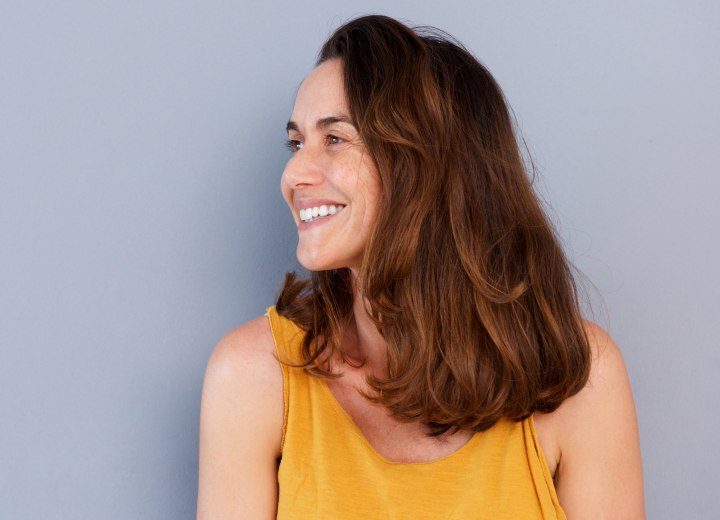Making Layered Hair Look Thinner

A: You're experiencing something that catches many people off guard after getting layers. While layered cuts are typically designed to remove bulk and create movement in your hair, they can sometimes create the opposite effect and make your hair appear fuller or thicker than before.
The technique your stylist used also plays a significant role in this outcome. If your layers were cut with a blunt cutting technique rather than being softly blended, or if they were placed at strategic points that naturally add volume like around the crown or face-framing areas, this could definitely contribute to that fuller appearance your boyfriend noticed.
Fortunately, there are ways to address this without damaging your hair or completely starting over with your cut. The most common professional solution is hair thinning, which involves using specialized thinning shears to remove some hair strands while leaving others intact. This technique can reduce bulk without dramatically changing the overall shape of your haircut.
When done correctly, thinning should be performed on the mid-lengths to ends of your hair, typically starting about one-third to halfway down the hair shaft from your roots. Your stylist should never thin the hair too close to the scalp, as this can create an uneven, choppy appearance. The key is to work gradually and conservatively, removing small amounts at a time rather than taking off too much all at once.
There are some risks to be aware of when it comes to hair thinning. The biggest concern is over-thinning, which happens when too much hair is removed or when the thinning is done too aggressively. Over-thinned hair can develop a frayed appearance with shorter pieces sticking out throughout your hairstyle. This creates an unkempt look that's much harder to style and manage than hair that's slightly too thick.
Another risk involves the frequency of thinning treatments. Hair thinning should never be done at every salon visit. A good rule of thumb is to have your hair thinned no more frequently than every third haircut. This gives your hair time to grow and recover between thinning sessions, preventing cumulative damage and maintaining the integrity of your hair's overall structure.
Before you decide on thinning, consider trying some styling adjustments first. Sometimes the issue isn't really the haircut itself but how you're styling it. Using the right products can make a significant difference in how your layers lay and move. Lightweight styling creams or serums can help weigh down your layers slightly without making your hair look greasy, while avoiding volumizing products will prevent additional lift and fullness.
©Hairfinder.com
See also:
I thinned my hair too much. Are there remedies to make it thick again?
The thinning of my hair went wrong. Is there anything that can be done to repair it?
Does my hair stay the same length as it was before when it gets thinned?
Should people with naturally curly hair have it thinned?